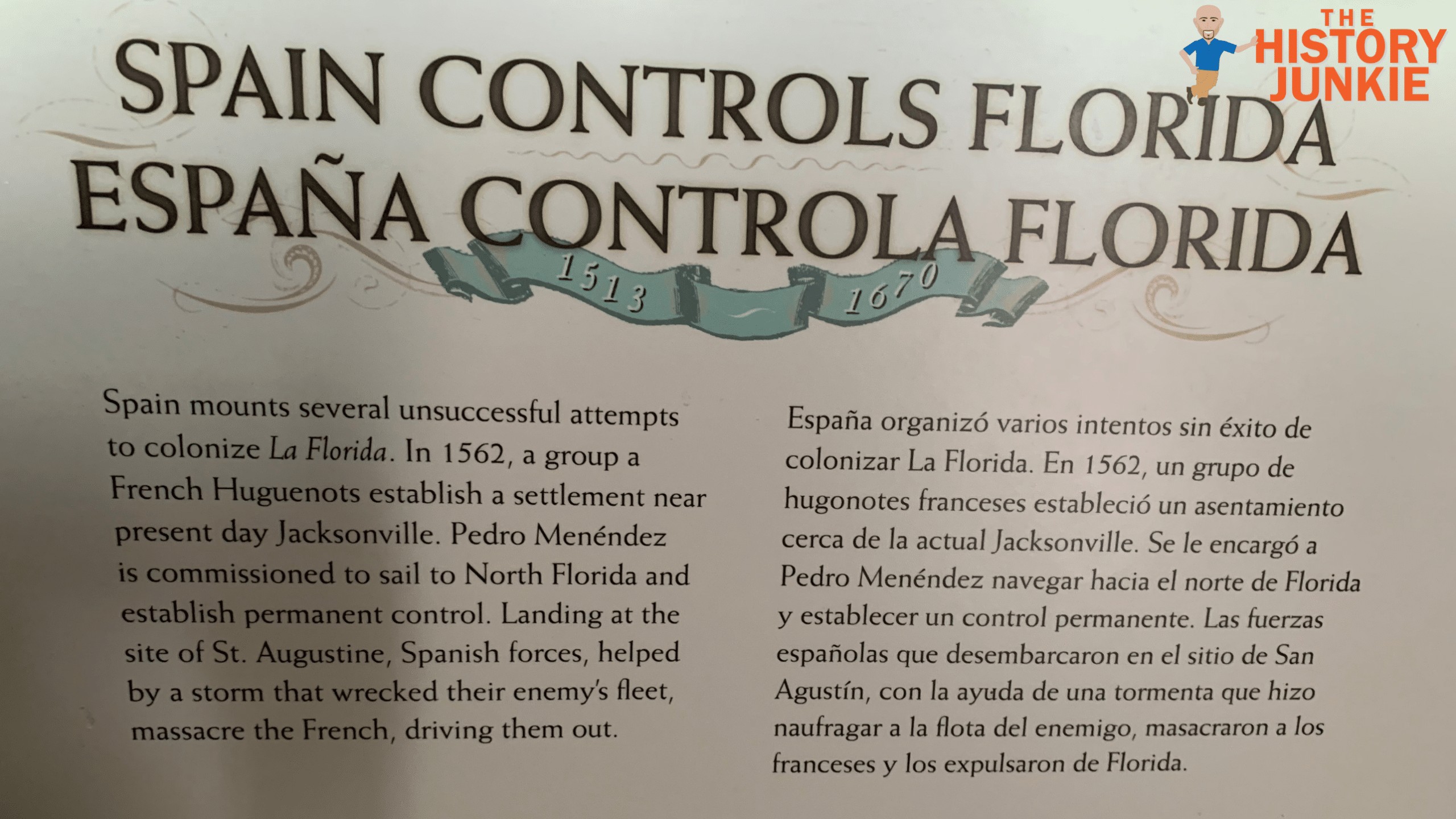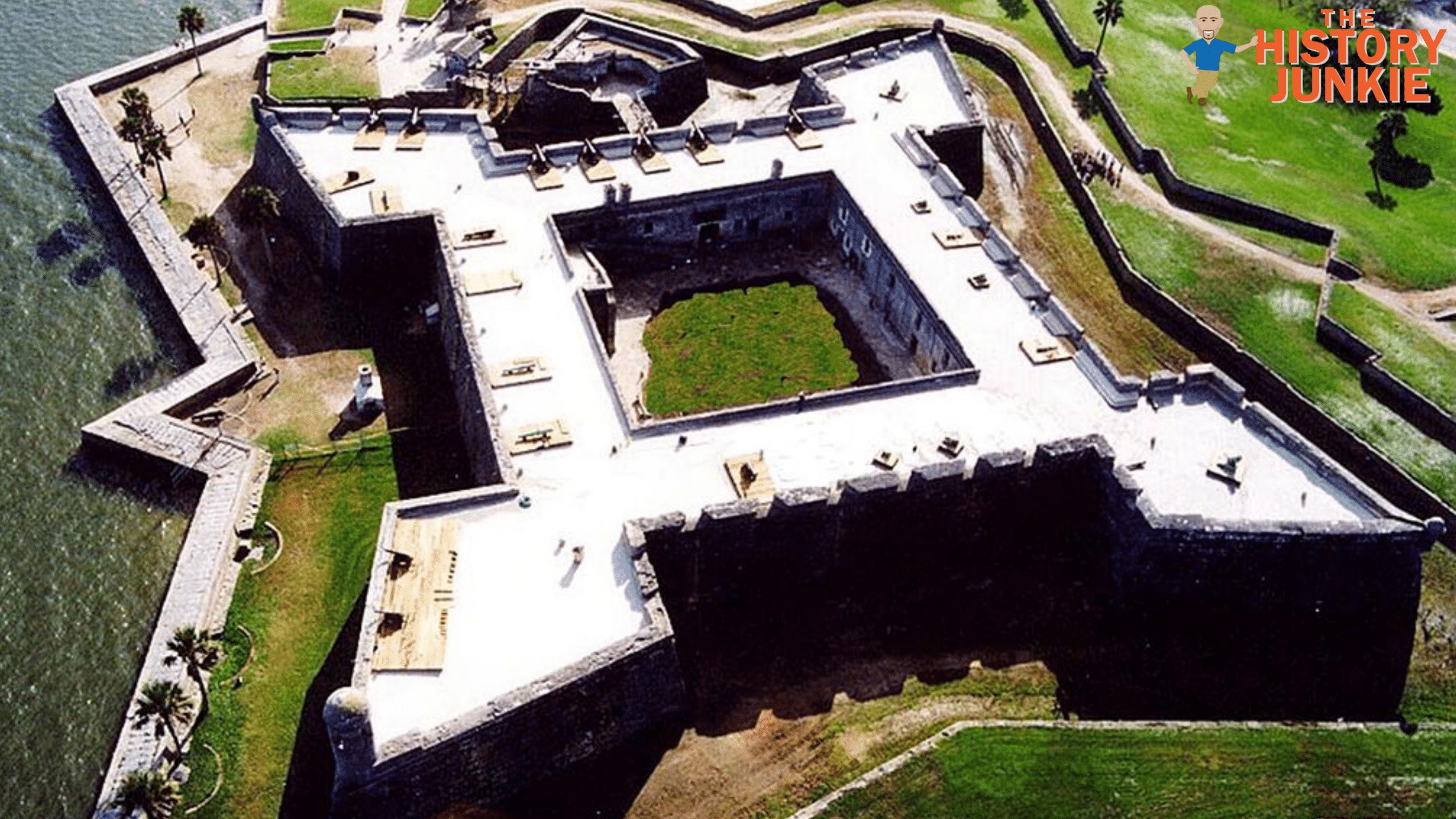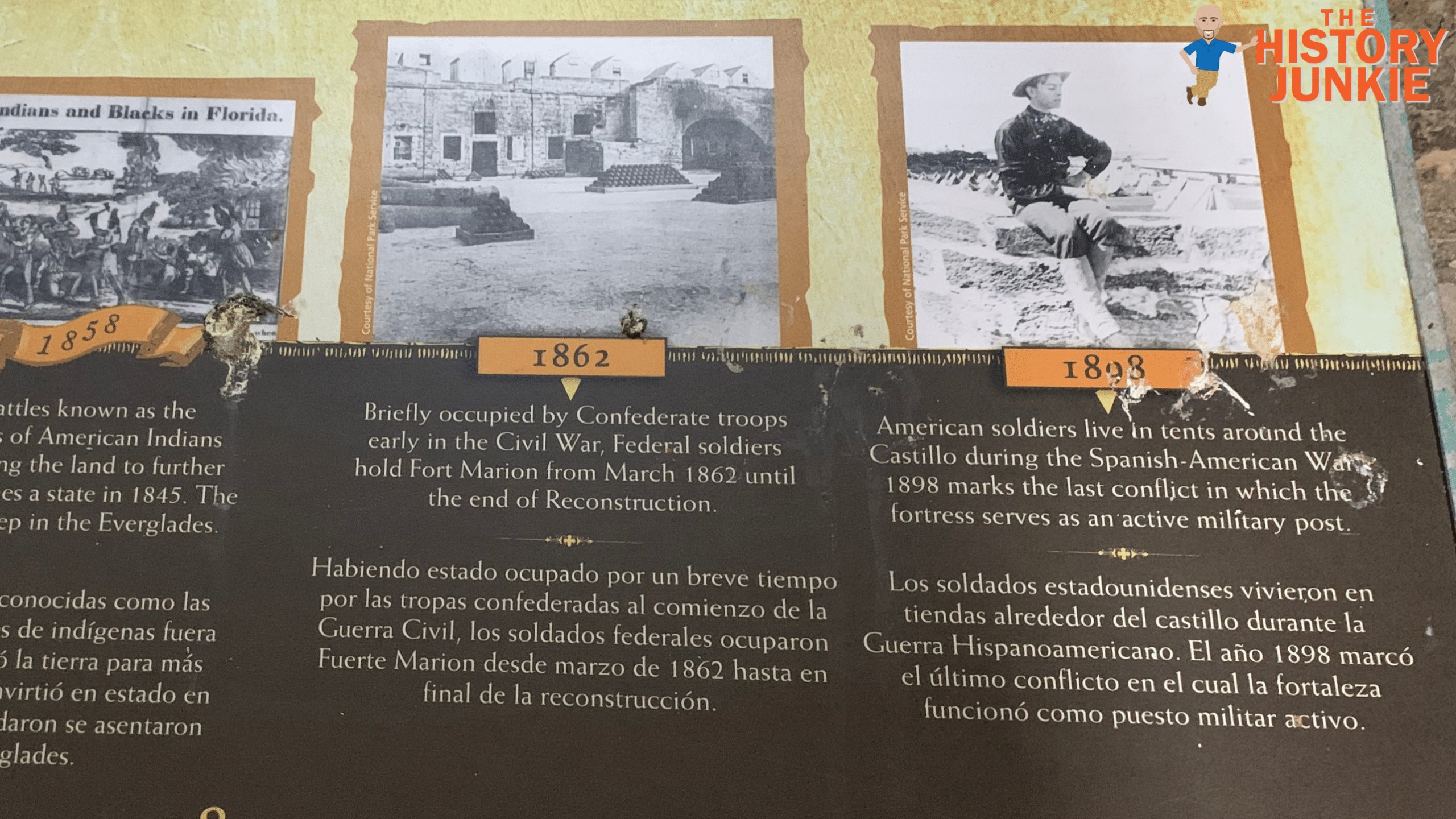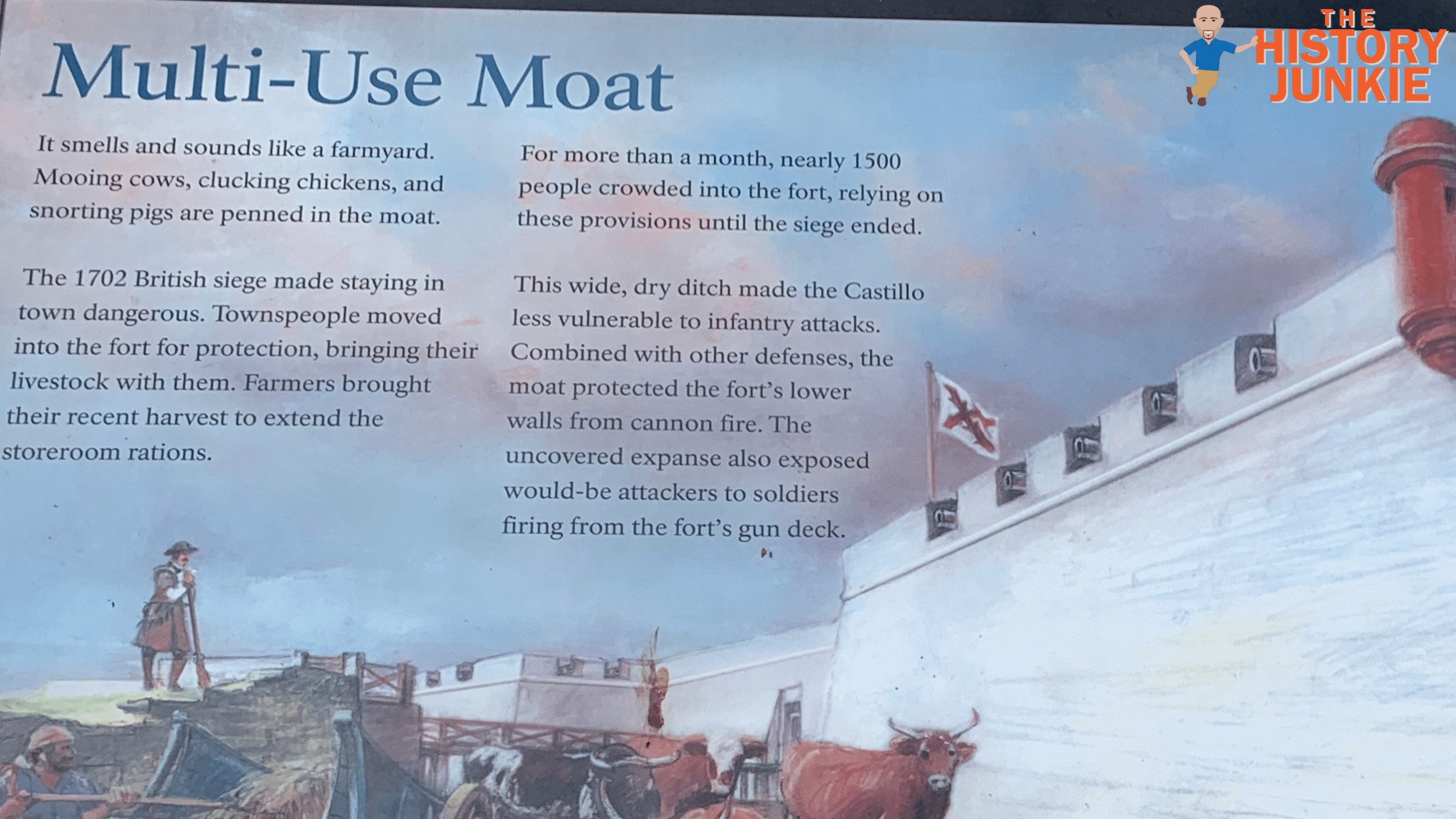When my family arrived in St. Augustine, we were surprised by the small-town feel, excellent beaches, and amazing food. As a history guy, I had wanted to visit the first permanent settlement in America since we had moved to Florida three years prior, but life and Covid had gotten in the way.
This year, my wife wanted to do something special for my 40th birthday, so we loaded up and spent the weekend at St. Augustine, and I must say it was a pleasant trip.
Jump to:
We arrived on Saturday and drove into the heart of tourism near Castillo de San Marcos, where I first laid eyes on the oldest fort still existing in America. It took me back to a feudal Europe with its stone walls and innovative design. It is the only remnant of feudal Europe that exists in America.
On the first day, we drove around a packed city and were unable to find a parking spot, so we decided to return to our Airbnb and grab a bite to eat at Conch House, where I had an excellent flounder.
St. Augustine is a bit like an amusement park without the rides. There is so much history within the downtown that it would be easy for a history guy like me to spend a week and not see everything. When we first arrived, I thought it would just be the fort and did not expect the heavy traffic. If you have limited time to spend at the historic location, then I would advise going on a weekday so you can make the most of your time.
I returned to Castillo de San Marcos on Monday morning when the traffic was light to begin my historical investigation of the fort. While I knew some of the histories behind this landmark, I was ignorant of most of it.
Here is a list of five things I learned about Castillo de San Marcos.
1. St. Augustine and Castillo de San Marcos Were Many Years Apart

It is important not to get confused with the founding of St. Augustine and the building of Castillo de San Marcos. That may seem obvious for some, but for a history guy like me, it was not. I thought the fort was built and then it was settled by others, but that is not the case
St. Augustine was founded in 1565 by Spanish Conquistador and explorer Pedro Menéndez de Avilés, 40 years before the founding of Jamestown and over 50 years before the founding of Plymouth and Massachusetts Bay. At the time of its founding, the Spanish was the dominant power in Europe and was building a monopoly of colonies within the Caribbean.
However, things began to shift quickly, and the English began to gain power. Sir Francis Drake sailed to St. Augustine in 1566 and razed the entire colony. The Spanish then knew it was time to begin to fortify the colony in order to protect their interests.
Wooden fortifications were made, but Castillo de San Marcos was not part of that building project.
It was not until the English began to settle and build the fort of Charleston and the raid of Robert Searles that the Spanish knew it would be important to build a sophisticated fortification that could withstand English attack.
Construction started on the fort in 1672 and would not finish until 1695.
2. Castillo de San Marcos Was Never Conquered

Florida and the National Park are located in the United States, so one can only assume that at some point, America conquered the area. However, that is not the case.
The timeline of the fort is interesting.
Obviously, the Spanish built the fort, and it withstood attacks from the French and the Spanish throughout the 17th and 18th century. However, Spain lost the fort to the British after the French and Indian War when they sided with the French and had to cede the fort to Britain after the Treaty of Paris.
Britain would use the fort as a prison during the Revolutionary War. After the British captured Charleston, they imprisoned three Signers of the Declaration of Independence: Thomas Heyward Jr., Arthur Middleton, and Edward Rutledge.
Spain would gain it back after the American Revolution when they allied with the Americans. The second Treaty of Paris gave St. Augustine, which inclued the fort, back to Spain.
This would last until Spain sold Florida to the United States.
Castillo de San Marcos was never conquered by another European power, and after many failed attempts, it seemed fool-hearty to do so.
During the Civil War, the Union did take control of the fort without the use of force when the leadership of St. Augustine surrendered to protect the city from being destroyed.
3. The Fort Was Last Used During the Spanish-American War

Technology had surpassed the fort's usefulleness by the time of the Spanish-American War. It could no longer defend against attacks, but it still remained useful during the Spanish-American War as a prison.
Deserters of the war were imprisoned at the fort.
This would be the last time it was used, as the fort would be made into a historic landmark soon after.
4. The Fort Was Used to Imprison Native Americans
After the Civil War ended, there were many Indian Wars in the West. Many of the Native Americans that survived the wars were imprisoned in the fort.
During this period, Richard Henry Pratt, a Civil War veteran, supervised the prisoners and upgraded the conditions for them. He removed the prisoners' shackles and allowed them out of the casemates where they had been confined.
He developed ways to give the men more autonomy and attempted to organize educational and cultural programs for them.
They became a center of interest to northerners vacationing in St. Augustine, who included teachers and missionaries. Pratt recruited volunteers to teach the Indian prisoners English, the Christian religion, and elements of American culture.
He and most US officials believed that such assimilation was needed for the Indians' survival in the changing society.
5. Castillo de San Marcos had an Advanced Design for its Time

While walking the grounds of the fort, one of the first things you notice is the fort's shape. It is shaped as a star, and its shape allows for a unique defense against invaders.
From the sea, the fort was hard to take due to the amount of cannons. The Spanish would use hot cannons to fire at wooden ships to set them ablaze in the Atlantic Ocean.
If the invaders chose to attack the fort from land, it would quickly become a deathtrap for them as they would be engulfed in a deadly crossfire due to its star shape.
When invaders did arrive, they would use the moat tucked into the outer walls. The moat was not filled with water, but the animals that had been moved into the walls during the siege or attack.
This allowed the residents to survive longer with supplies during a siege and kept the invaders away.
Until the advancement of technology, the only way to take the fort was to hope that one could starve the residents in a siege. The fort was fireproof and had many ways to protect its defenders from an onslaught.
The attacks would become more difficult when, in 1740, Fort Manzanas was built at the mouth of the waterway to fend off and warn of attackers coming into St. Augustine.
